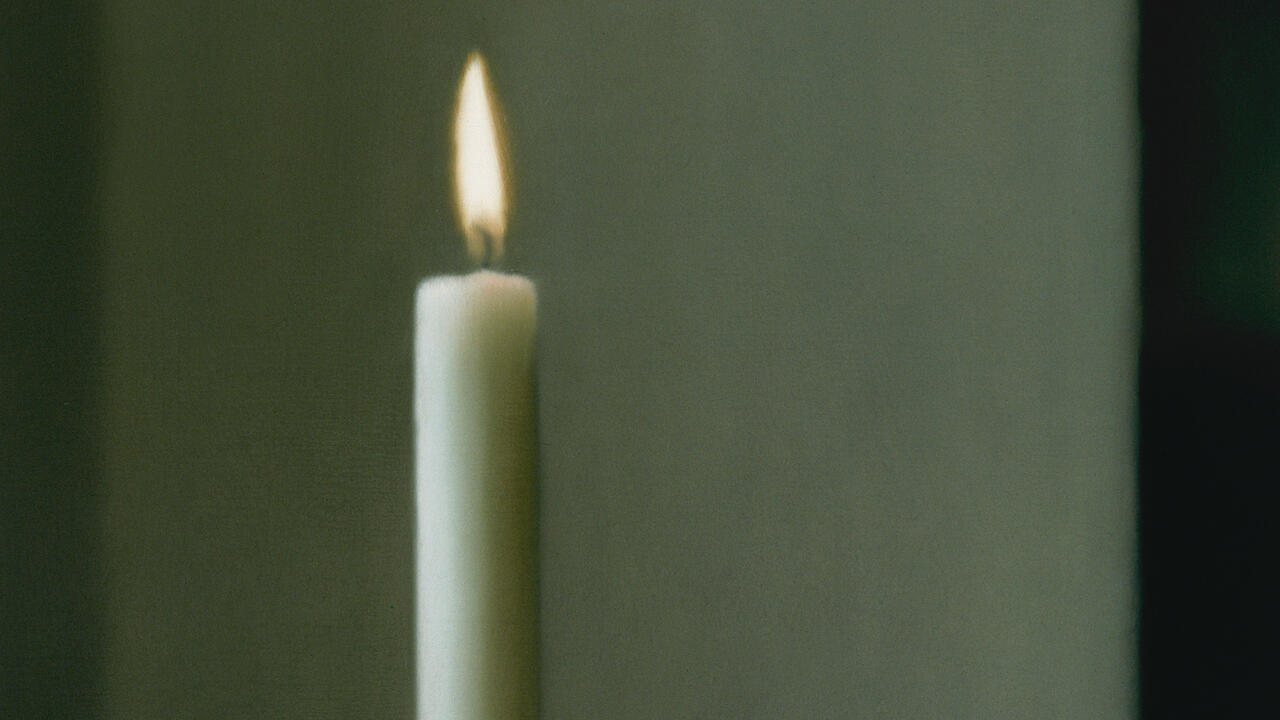Verena Pfisterer
Vonderau Museum Fulda
Vonderau Museum Fulda

With the exhibition Werke und Dokumente (Works and Documents), the Vonderau Museum in Fulda played host to a cross-section of the works of Verena Pfisterer, who died in 2013. Pfisterer is a little-known figure, having decided in the 1960s – like Lee Lozano, Charlotte Posenenske and Chris Reinecke, albeit under different circumstances – to drop out of the art world. She was born in Fulda and studied at the Städelschule in Frankfurt and the Kunstakademie in Dusseldorf, leaving the art scene shortly thereafter. ‘I needed explanations for the state of the world’, Pfisterer said in a 2009 interview, ‘and at first I thought art could fulfill this need and explain the world to me. But then I saw that this was a very one-sided view.’ After moving to Berlin, where she spent the last four decades of her life, Pfisterer decided out of economic desperation to train as an occupational therapist in the early 1970s, then to study sociology, and finally to complete a doctorate in philosophy. By taking this path, she freed herself from a dead end situation in trying to make a career out of art (which in part was due to her ostracism by her male artist colleagues). The result was the marginalization of herself and her work, though she never stopped making art. Pfisterer – in her early sixties – was rediscovered in the early 2000s. Her works were exhibited at the Berlin gallery Kienzle & Gmeiner in 2001, and were part of the 2004 group show Kurze Karrieren (Short Careers) at mumok in Vienna. This belated spell of interest in Pfisterer did not have any lasting effect, but the current show in Fulda may reignite interest in her work.
A large share of the paintings, films, photographs, objects, papers, drawings and notations that Pfisterer produced privately in recent decades have been sitting in her archives and are only now, a year and a half after her death, being exhibited in their full breadth for the first time. Curated by Helmut Kopetzky and Dietrich Ebert, two long-time companions and champions of the artist, the exhibition is highly personal and almost retrospective in its scope. ‘Pfisterer’s oeuvre is rare’, the exhibition catalogue states, ‘in the way that her works intertwine with her development as a person and with her concomitant and largely painful struggle with time and her surroundings.’ The show, then, focuses deliberately not only on the artist’s output, but also on the artist herself. At many points, this lends a strongly memorial and intimate quality to the exhibition, as in the example of Pfisterer’s displayed diary. At the same time, this approach tells the story of an artist who was, for all her remarkable ingenuity, unable to find any effective strategies to establish herself in a field where women were scarce in the 1960s and ’70s.
The ideas and concepts that Pfisterer developed later alongside her academic and therapeutic work, after her official artistic career had ended, were created in an almost hermetically sealed space where very little from the outside penetrated in and very little from the inside got out. Questions of medium were peripheral to Pfisterer’s work, as was artistic exchange with her contemporaries. She posed epistemological questions that were rooted in sociology and philosophy, which sought to expand and alter consciousness. Even in her early years, she developed impressive participatory spatial concepts in works like Lichtbrunnen (Light Fountain, 1965) and Silberfallen (Silver Downpour, 1965), curious objects of plastic, plush and wood, and kinetic objects such as the Vibrierender Spiegel (Vibrating Mirror, 1964), a small, cabinet-like wooden box containing a mirror. When a button is pushed, the mirror moves in such a way that the shaking reflection appears to vanish.
Pfisterer made frequent use of easily understood shapes and symbols – flowers, clouds, stars, cubes and circles – in her sensual art, which demanded participation. Her works show a marked and palpable affection for the everyday and the insignificant. Many of the objects in the exhibition seem like Fluxus-esque relics: mystical, trashy and transcendental. Crosses and hearts are omnipresent. Her photographs of everyday life leave no doubt that she observed her surroundings meticulously and sought painstakingly to capture them by every means available. A thousand of these small-format photographs were on display in Fulda, in albums that visitors could leaf through. This photographic opus, which documents Berlin in the 1980s and ’90s, offered an incredibly precise archive of urban transformation. Pfisterer first published some of these photographs in 2006, as part of her 400-page book Fotografie und Alltag (Photography and Everyday Life), which was intended as a pairing of her artistic and academic work. It is highly unlikely, however, that many saw this book, given that it was a print-on-demand publication.
The question that could be posed now is how should one engage with such a body of work? Pfisterer’s position in art history remains to be determined, but the fact that this exhibition is raising the profile of her prodigious output is in itself a valuable second beginning.
Translated by Jane Yager














